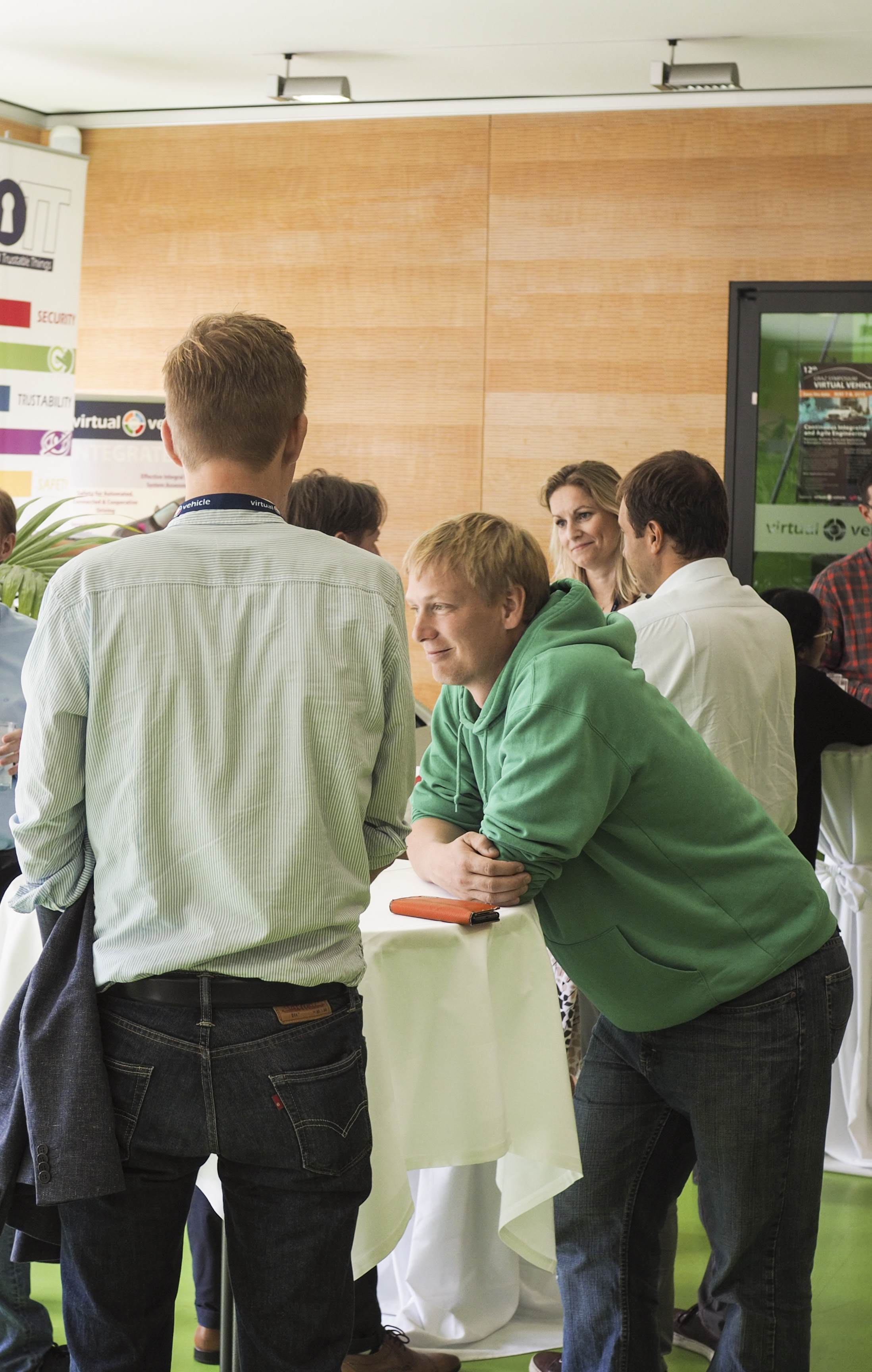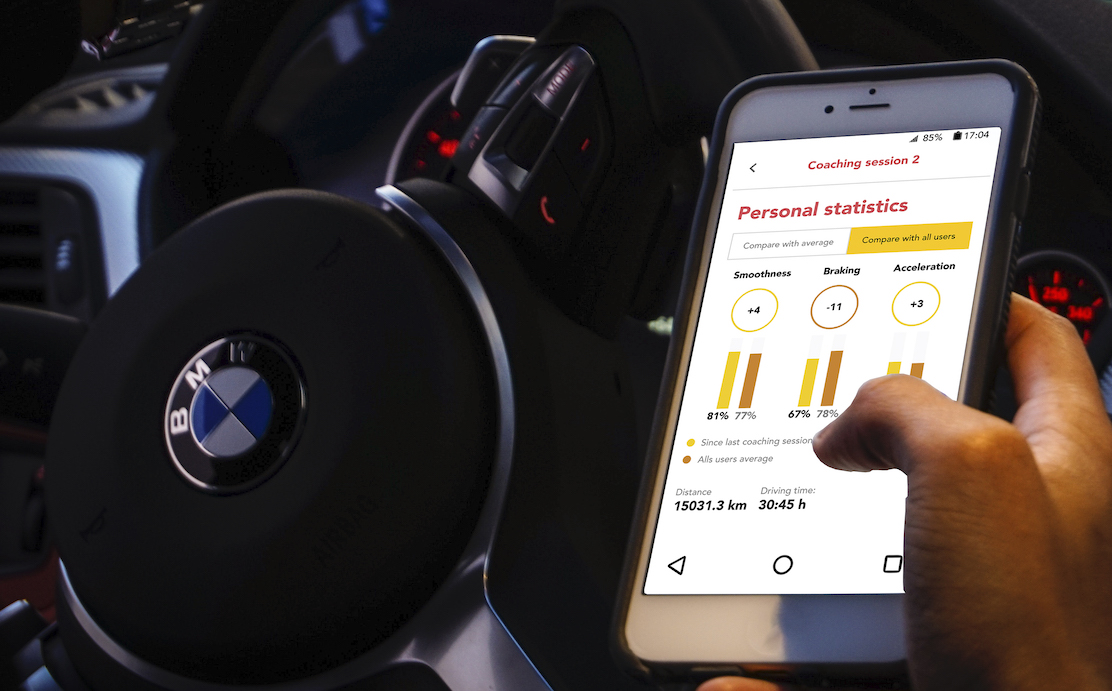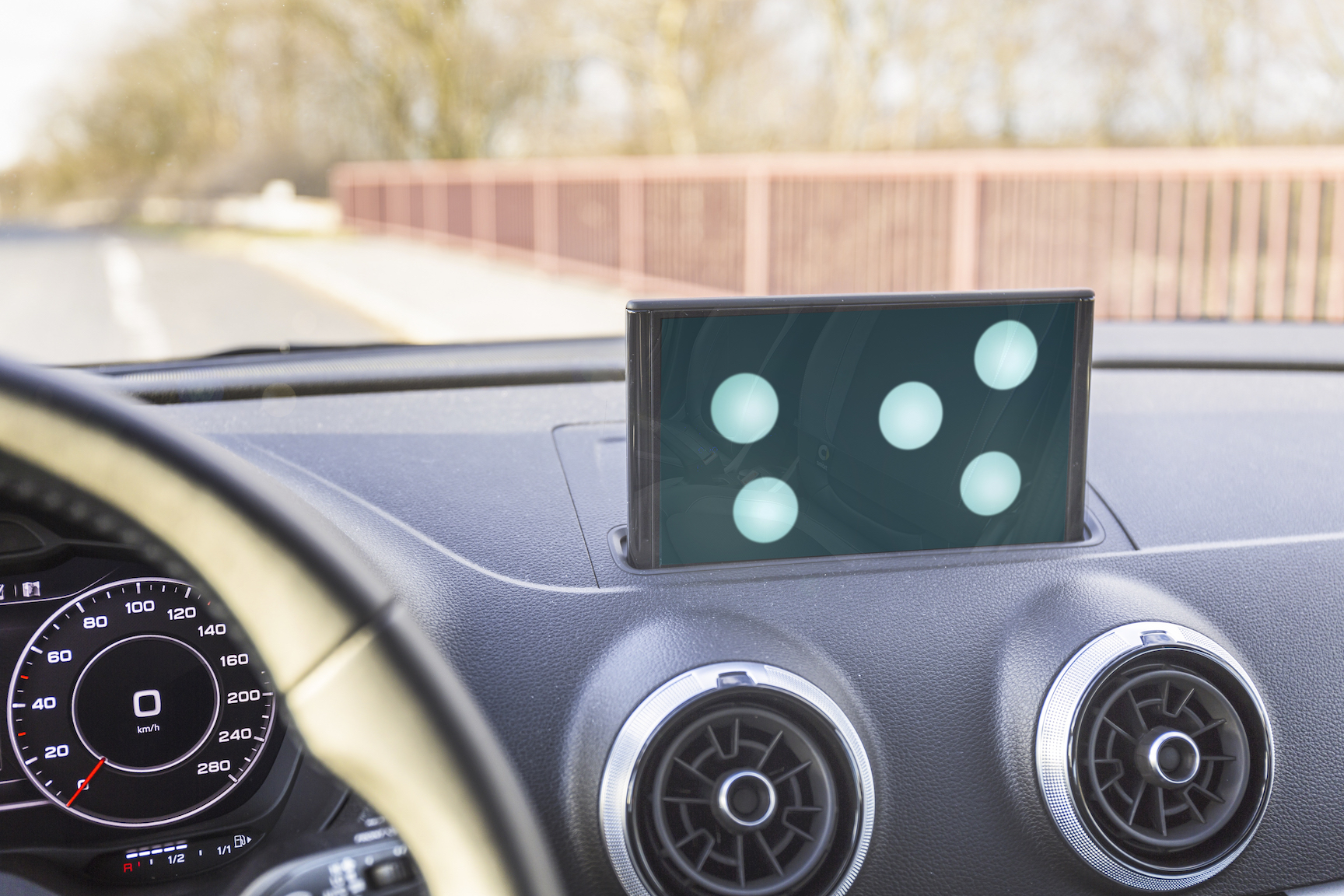The importance of real-life impact
The fourth General Assembly meeting was held in Graz in Austria as autumn did its early entrance across Europe. Although chilly outside, MeBeSafe members began boiling of excitement to finally commence field trials and get their hands on some new data.
Picking up from the previous meeting, the teams had already seen promising results. Through simulations or small-scale testing, their nudges seemed to make a difference in traffic safety indeed. From now on, the data collected in the oncoming field trial would show just how accurate these indications are for the real world. However, given we receive data supporting those indications, how do we prove we’ll actually have an impact in traffic safety?

The answer isn’t straight-forward. The leader of the field trials, Mikael Ljung Aust from Volvo Cars, consequently kicked off the meeting with a workshop on the importance of translating our data to real-life impact. In brief, MeBeSafe set out to define the benefits of our nudges and their possible adoption in the real world. From this, we can derive the impact; how many risky situations, fatalities and injuries can possibly be avoided? During the field trial, we are responsible for selecting the types of data that are anticipated to help us measure the potential nudge benefit. Once collected and analysed by each research team, the data will ultimately be analysed by another team lead by Jordanka Kovaceva from SAFER to solve the overall translation from data to real-life impact.
So which type of data would be suitable for each of our behavioural measures? This was the main topic throughout the rest of the workshop, which smoothly converged into the actual General Assembly meeting. The great researchers from across the projects gave an up-to-date retelling of what’s going on.
Olaf Op den Camp from TNO started off by explaining how his team had planned a car route on which they will check the effectiveness of their nudge. The nudge aims to support drivers in becoming aware of where cyclists might appear, and it consists of a low intrusive HMI (Human-Machine Interface) within the car. But will it suffice? The main question to answer is whether the HMI is able to direct the driver’s attention to where we indicate it on the HMI.
The field trial will take place in Eindhoven, and the route includes 80 intersections where potential accidents could occur. It will be preceded by an initial test with a handful of people in order to understand how well the route works and if the results make sense. If it does, the complete field trial will commence with more participants. So, how will effectiveness be measured? Speed could seem like a classic measure, but in this case TNO knows it would not work. If there is a car in front of an observed driver, it will affect the speed of said driver. Namely, they may drive at a slow speed because they are forced to. Then it won’t be possible to interpret the driver’s attention in intersections. Instead TNO will measure the direction and duration of gaze of the driver, as it has a stronger link to attention.

Pontus Wallgren from Chalmers presented how the Swedish cyclist nudge had fared in Gothenburg. The nudge aims to make cyclists more aware and adapt their speed ahead of dangerous intersections. As far as design goes, a version with flat white stripes across the bike lane have earlier shown the most promising results. Bikers seemed to slow down before an upcoming intersection, even when they expressed to not have actively noticed the stripes.
As part of the field trial, the nudge is already implemented at one of the riskiest intersections in this west-coast city. To analyse the effect, equipment has been set up to measure speed and trajectory of all cyclists passing this location. For a more user-centred perspective, cyclists commuting via the intersection have been asked to record their commute. They are now eager to contribute with footage, trajectory and speed data. The data collection will be followed up with interviews to capture their thoughts on the nudge and bike lanes in general. Soon enough, the nudge will also be implemented at another risky intersection, followed by another round of recruitments.
Inspired by the cyclist nudge in Sweden, Olaf Op den Camp briefly described TNO’s idea on how to implement the same nudge in the Netherlands. The starting point was to facilitate how bike lanes weave together, where both merging lanes show a high flow of cyclists. After thorough consideration, they will be looking specifically at double-lane intersections between bikers. These can potentially pose a problem, for example, when a cyclist attempts to enter a bike lane where other bikers keep a high speed. In contrast with the implementation in Sweden, the team in the Netherlands will use the same type of nudge in order to increase attention rather than to decrease speed.


Next, Saskia de Craen from Shell gave insight into the details regarding the truck-driver-coaching app. The most interesting thing with this measure is how it involves peer-to-peer coaching, which is shown to be most effective in existing coaching literature. Also, it is apparent why peer-to-peer came to be a necessity. Given that truck drivers have an incomparable amount of experience, it seems more credible to receive feedback from a fellow truck driver than top-down from a manager.
The coaching app is currently being improved on from the existing version. Now it is time for features which the team have been dreaming of implementing since the app was initially launched. This includes showing video footage for coaching purposes and a survey function among other things. As soon as the new version is online, the app will be distributed to selected truck drivers across Europe. The goal is to decrease harsh braking by 50%, but the definition of what “harsh braking” actually is has shown to be something up for discussion. Nonetheless, if showing promising results in real life, Saskia asserts the app will likely reach beyond the MeBeSafe project.
Mikael Ljung Aust is responsible for two measures at Volvo Cars. Regarding the first one, he told how to cleverly overcome some complications of the adoption of adaptive cruise control (ACC) in cars. The concept of the measure itself is simple. It is an HMI where you see an ambient design that changes from non-orderly to orderly the more you use ACC. But in order to evaluate the app in-use, it requires the driver to activate the ACC. Following the findings from a previous study, they knew it is not as easy as it sounds.

In this study, drivers had been guided by the cars’ limited voice-instructions: “Press the middle button”. Not surprisingly, people interested in tech did it in no time, but people with low interest assumed the system was a full-fledged voice assistant and replied with questions such as “What do you mean with middle button?” The system wasn’t able to reply back, and the users would not continue to activate ACC.
To overcome this complication, the team will conduct a Wizard of Oz study, i.e. people will believe they interact with a system while it in reality is a human. This way the team hope to coach even low-interest users into activating ACC, and subsequently be able to nudge for the continuous usage of it. For now, the app is installed in ten cars and the goal is to have a fleet of 50 in a few months. Along the way, the team hope to answer the question whether low-interest users will continue using ACC or not once they have been exposed to it.

The second measure from Volvo Cars is the in-car app nudging drowsy drivers to become aware of the state they are in. The plan now is to simply show a message prompting “If you take a pause within the upcoming minutes, you will have a movie ticket in your inbox”. The potential of the app depends on whether we can find an incentive that will work over time. The team will commence by offering something that actually means something to people. However, what would one driver’s reaction be if the incentives changed over time? Would the driver appreciate to receive a cup of coffee if named driver had previously received cinema tickets? The field trials will show us which road to take forward.
From here, Anna-Lena Köhler from ika, took a right turn and gave updates on the nudge aiming to make drivers adopt a safe speed. This nudge works by lights sequentially turning on and off on either side of the road, giving you the impression of driving faster than you actually are. It has now been built onto a real road exit in Eindhoven and is currently being fine-tuned. How tangible the excitement was as this news entered the room! It actually is quite rare for research to take the leap from theory and papers to something so physical and close to reality. The main focus will be to collect speed data over time and see how drivers are reacting. An elegant detail about this particular nudge is that it will only be activated if the driver’s speeding behaviour is considered risky. As such, the nudge will be used only as much as needed.

Ending this General Assembly, only as much as needed could summarize the essence of all MeBeSafe’s nudges and measures. Here in the middle of Europe, underneath a duvet of autumn leaves, we have now established our excitement. We are at the beginning of the field trials, and now is the time to test everything which has previously been simulated. Everything just got real.
